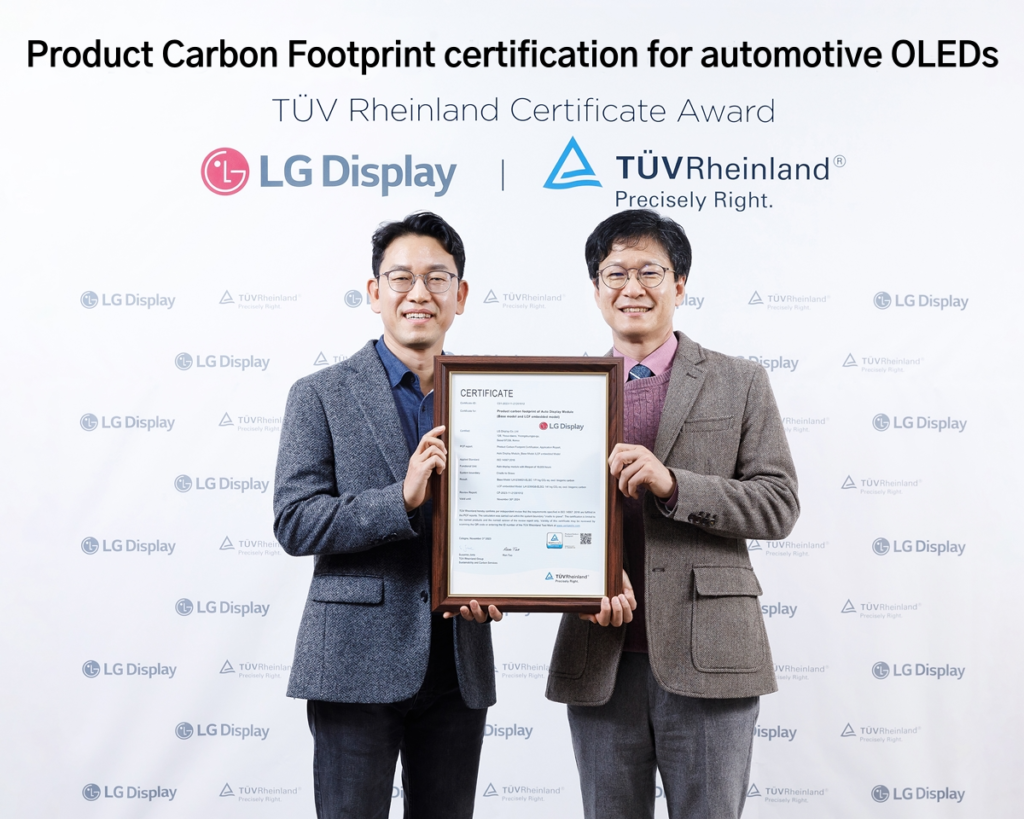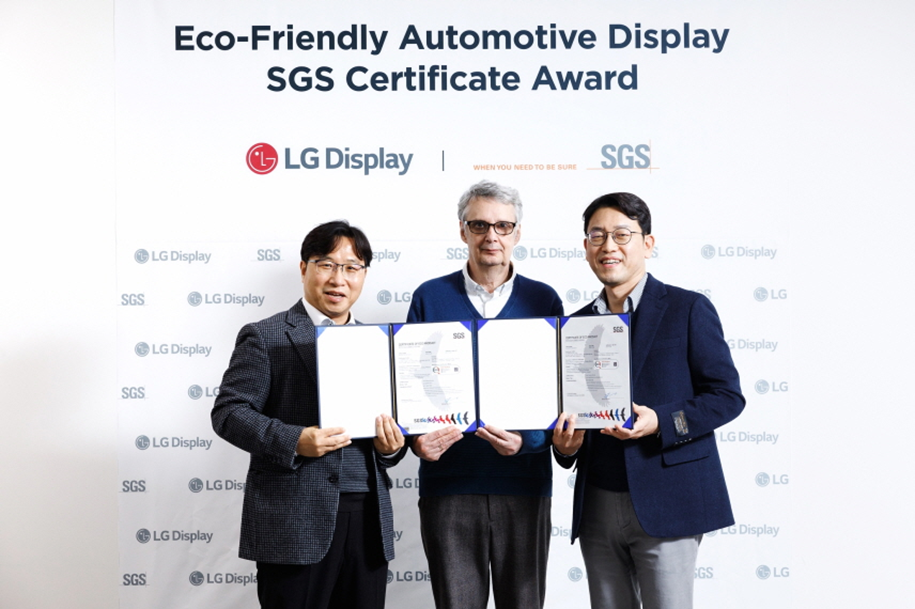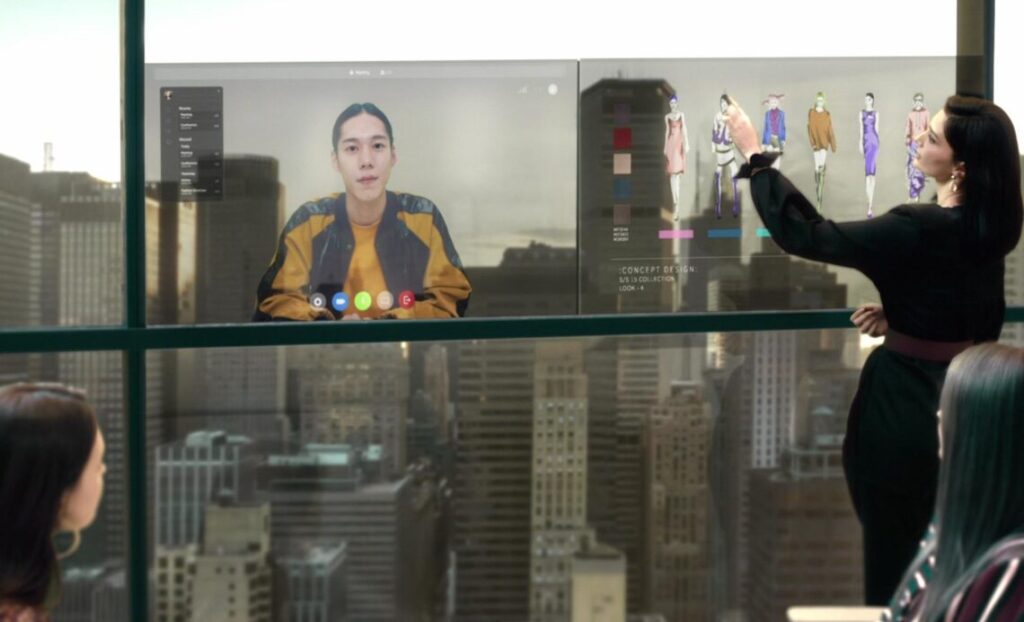
Today’s automobile industry stands at a pivotal juncture in its bid to combat climate change. The International Energy Agency (IEA) highlights that passenger cars and vans contributed a staggering 3 gigatons of CO2 emissions in 2022, almost one-tenth of the global CO2 emissions tally. With the urgency to meet the Paris Agreement targets to curb global warming by reducing greenhouse gases by 50% before 2030, many automotive companies are racing towards achieving net-zero emissions by 2050.
Amidst stringent environmental regulations emerging in major markets like the U.S., EU, and China, LG Display is intensifying its foothold in the industry by developing differentiated automotive OLED displays with minimal impact on the environment.
Automotive OLED’s first-ever ‘Product Carbon Footprint’ certification

The automobile industry’s drive towards decarbonization extends beyond power trains to encompass the multitude of components that constitute a vehicle, including displays. LG Display’s Automotive OLEDs including P-OLED and Advanced Thin OLED (ATO) recently became the first OLED displays for automobiles to receive TÜV Rheinland’s coveted ‘Product Carbon Footprint’ certification, a milestone marking compliance with emissions standards across the product’s lifecycle.
This achievement was made possible through LG Display’s very own ‘Light Control Film Integration Technology’, which results in up to 18% less carbon emissions compared to previous standards. Breaking apart from the traditional method of using external films, LG Display’s Automotive OLEDs feature films that are internally embedded to control the direction of light within the panel for better visibility. This method also has the added benefit of effectively streamlining the manufacturing process, further reducing product weight, and improving power efficiency compared to conventional panels that use external films.
LG Display’s Automotive Displays Innovation: P-OLED and ATO

LG Display is currently applying the Light Control Film Integration Technology to its range of automotive OLEDs, including P-OLED and ATO. P-OLED utilizes a flexible plastic substrate for the thinnest, lightest, and most flexible design that can be incorporated nearly everywhere inside the vehicle. In addition to aesthetics, P-OLED uses 60% less power and weighs 80% lighter than LCD displays, making it the perfect solution for power-hungry electric vehicles. Meanwhile, ATO replaces P-OLED’s plastic substrates with glass to bring down manufacturing costs for more cost competitiveness, all while retaining the innovative Tandem OLED and a 20% thinner glass substrate compared to other OLED products for sleek, lightweight, and stylish designs.
Both P-OLED and ATO utilize the company’s pioneering Tandem OLED, a two-stack OLED technology that adds an extra organic emitting layer for brighter screens, optimal stability, and longer lifespans compared to single-layer OLEDs. Last year, LG Display began the mass production of its second-generation Tandem OLED, which features higher brightness and enhanced durability while reducing power consumption by 40% compared to the previous generation.
Automotive OLED’s competitiveness and sustainability recognized by global institutions

In addition to becoming the first automotive OLED display to receive the ‘Product Carbon Footprint’ certification from TÜV Rheinland, LG Display’s automotive OLED and LTPS LCD were awarded the industry’s first Eco-Product Certification Mark from SGS for adhering to global environmental standards, minimizing power consumption, and reducing the use of hazardous substances throughout its product lifecycle, from production to disposal.
Furthermore, LG Display’s P-OLED provides exceptional visibility under various driving conditions and is more comfortable to look at thanks to its low blue light and light reflection, becoming the first of its kind to earn TUV Rheinland’s Eye Comfort Display certification, in addition to being certified as a High Visibility Automotive OLED product.

As the landscape of mobility evolves towards smarter and greener solutions, LG Display remains steadfast in its commitment to upholding its status as the global leader in the automotive OLED segment, integrating eco-friendliness with differentiated technologies such as Tandem OLED and Switchable Privacy Mode to innovate future driving experiences while minimizing its ecological footprint.









